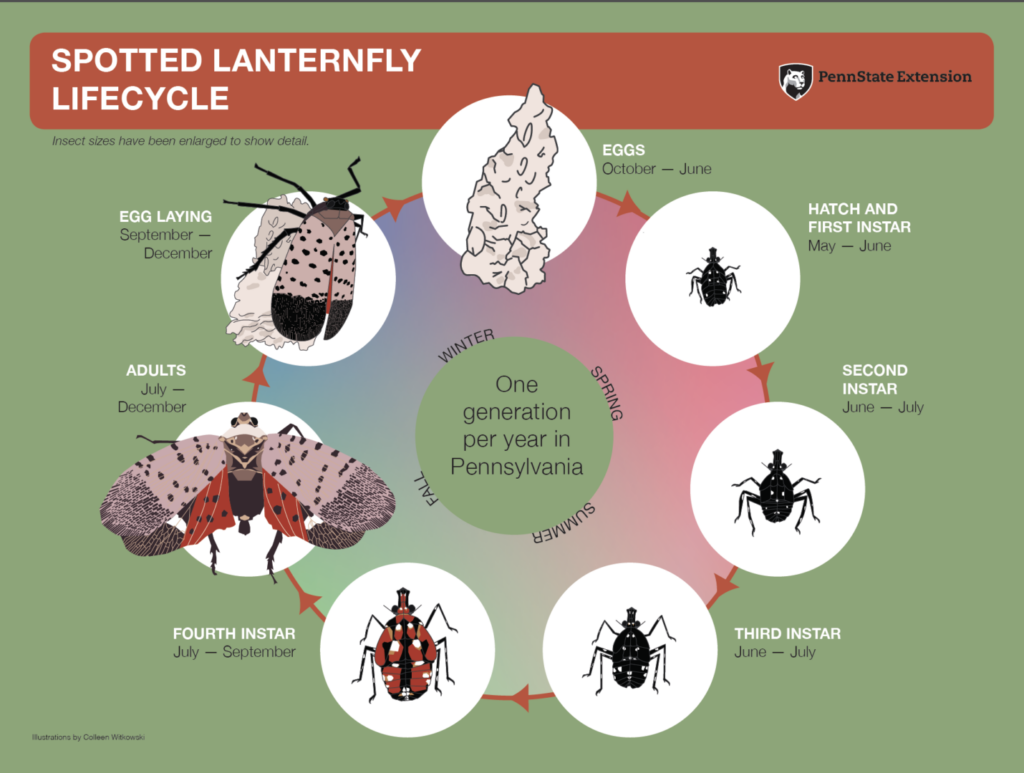As temperatures rise and spring emerges here in the Youghiogheny River watershed, a new threat to our environment has emerged. The pesky Spotted Lanternfly has been identified in both Fayette and Somerset counties, adding them to the growing list of 49 counties in Pennsylvania where the spotted lanternfly has been found.
This invasive species was first discovered in the United States in 2014 near Berks County Pennsylvania. A native to Asia, the spotted lanternfly invaded South Korea throughout the 2000’s seriously impacting their grape production. While they are not known to bite or sting people or animals they are devastating to plants and have caused billions of dollars in damages to the agricultural and hardwood industries.
While you might not understand how a tiny insect is a threat to our watershed; their presence is of great concern. These pests often feed on more than 70 plant species such as trees like maple, sycamore, and black walnut, fruit trees like apple and peach vegetable plants, blueberries and grape vines. The insects also leave behind a sticky substance called “honey dew” everywhere they go. Honey dew is partially digested tree sap that is high in sugar content that attracts flies, ants, and stinging insects. Plants infested by the lanternfly may have oozing, wilting, defoliation, a loss of quality or yield and even death.
The spotted lanternfly completes one generation each year. They begin emerging from the eggs between April to June. At this point they are small instars about a quarter inch in size. They are a solid black insect with white polka dot spots. They do not have wings; therefore, their movements are limited as a planthopper. As they feed, they increase in size through the second and third instar phases during June and July, while maintaining the same color characteristics. Around July to September, the nymphs change during the fourth instar to begin developing the characteristic red colorization. The instars transition to adults between July and December when their wings form. The adult spotted lanternfly is about an inch long, while its width varies depending on whether the wings are opened.

We all can play a role in reducing the spread of the spotted lanternfly. Below are a few suggestions, but you can learn more about lanternflies, their prevention and management strategies from Penn State Cooperative Extension (Spotted Lanternfly (psu.edu)) or the Department of Agriculture (Spotted Lanternfly (pa.gov)).
- If you see a lanternfly, kill it. They can be squished, squashed, stomped; whatever it takes.
- Learn the life cycle – Be alert to know what life cycle stage is occurring for that time of year.
- Prevent the spread!
- Check your vehicles, equipment, or items stored outside that is moved from site to site for the presence of lanternflies before moving it. Even firewood, should be inspected before moving.
- Check for the presence of eggs on trees or anything that is stored outside. Lanternflies will lay their eggs on anything. If you find an egg mass. Scrape them off and kill them.
- Implement management strategies such as traps.

